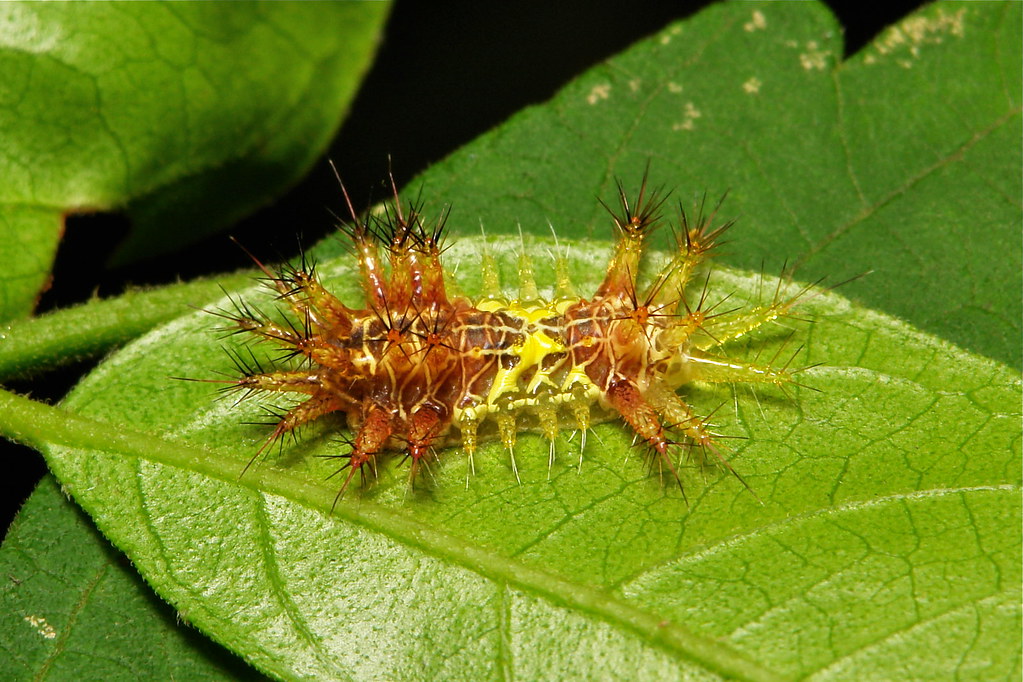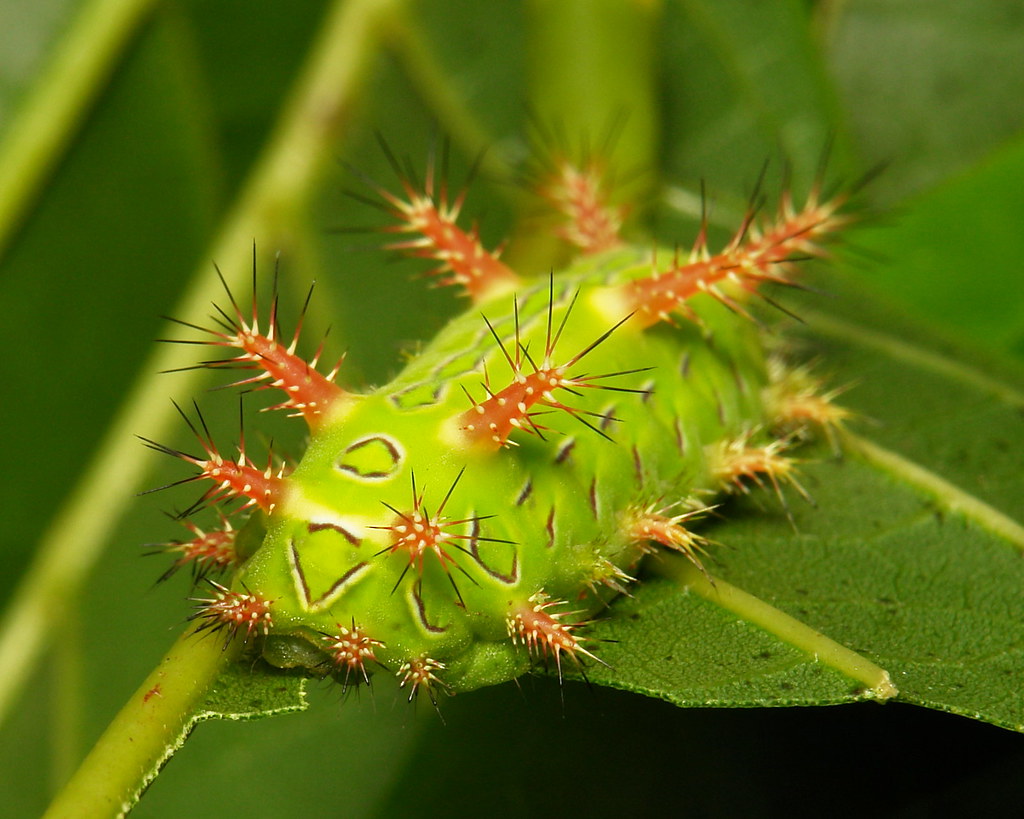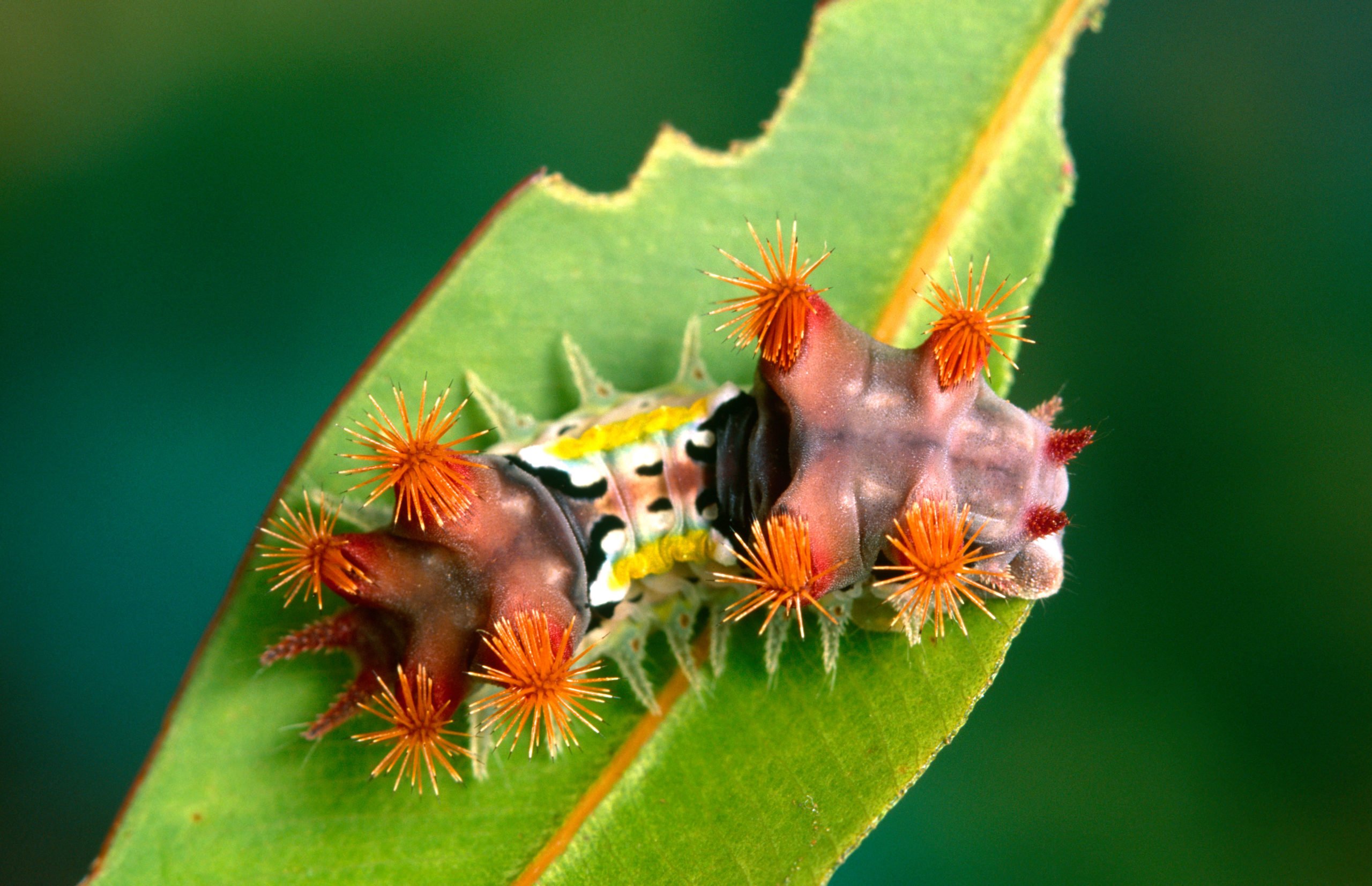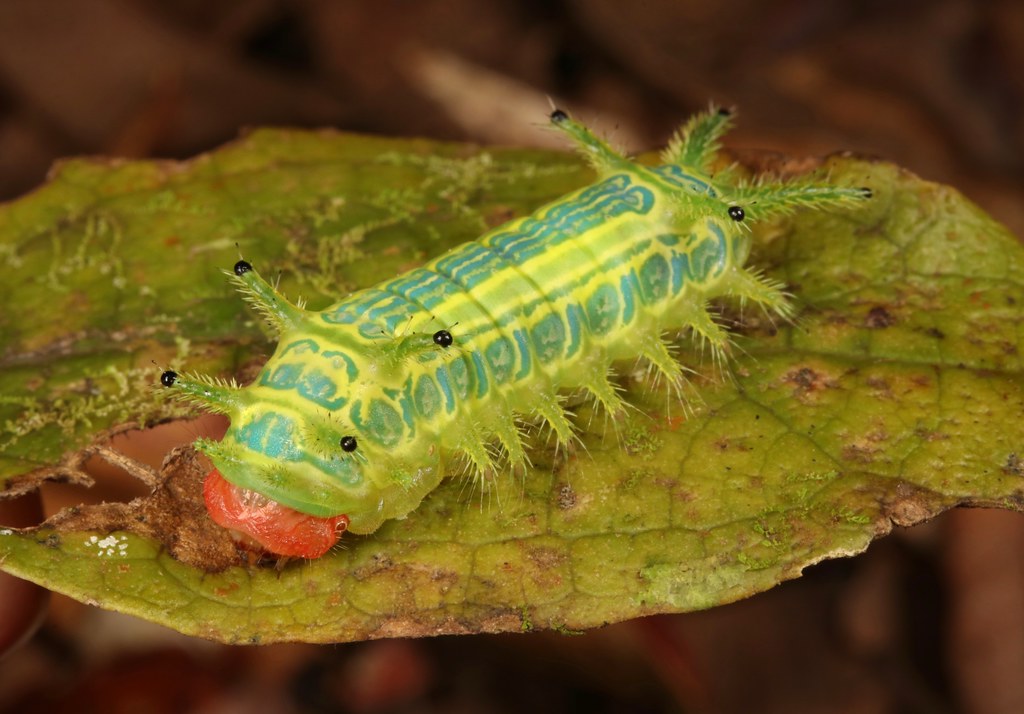
Stinging Nettle Slug Caterpillar (Cup Moth, Susica sinensis, Limacodidae) "Torpedo" a photo on
Doratifera vulnerans, commonly known as the mottled cup moth, Australian cup moth or Chinese Junk (referring to its caterpillar), is a species of cup moth of the family Limacodidae. [1] The species was first described by John Lewin in 1805 and is the type species of the genus Doratifera. [2] It is found in Australia.

Early instar Stinging Nettle Cup Moth Caterpillar (perhaps… Flickr
Cup Moth larvae are often highly ornamented and brightly colored. Two main types can be distinguished: larvae armed with rows of protuberances bearing stinging spines called nettle caterpillars, or non-spined forms where the surface of the larvae may by completely smooth, called gelatin caterpillars.

Stinging Nettle Slug Caterpillar (Cup Moth, Darna sp., Lim… Flickr
1 Remove the caterpillar without touching it. If the caterpillar is still on your skin, use pliers, tweezers, or thick gloves to pick up the caterpillar and remove it. Never try to remove the caterpillar with your bare hands because it can sting you again. [1] Caterpillar stings come from their tiny spines that look like hairs.

Stinging Nettle Slug Caterpillar (Cup Moth, Limacodidae) "… Flickr
The mottled cup moth caterpillar (. is a common culprit of caterpillar envenomations in Australia. The binomial name of this species etymologically means 'bearer of painful gifts.'. Doratifera vulnerans caterpillars are endowed with venomous spines. Like all members of the genus , the groups of large venom spines are retracted at rest and.

Stinging Nettle Slug Caterpillar (Cup Moth, Limacodidae) "… Flickr
When a puss moth caterpillar rubs or is pressed against skin, venomous hairs become embedded. Envenomation causes intense throbbing pain, burning, and a rash with erythematous spots. More susceptible patients can experience swelling, nausea, abdominal pain, headache, lymphadenopathy, lymphadenitis, shock, and respiratory distress.

Stinging Nettle Slug Caterpillar (Cup Moth, Phlossa sp., L… Flickr
October 13, 2023 by Bugman, Piyushi Dhir Slug caterpillars can easily catch your attention due to their exquisite appearance. Contrary to their name, these creatures are not actually slugs but rather the larvae stage of certain moth species.

Stinging Nettle Slug Caterpillar (Cup Moth, Limacodidae) "… Flickr
Mottled Cup Moth caterpillars are pale brown in colour, the bright warning colours white, pink and yellow in the middle. They show their stinging hairs when disturbed. Mottled Cup Caterpillar is also known as Chinese Junk because of their shape and their way of moving like ship at sea.. Cocoon diameter 8mm

Meet the venomous mottled cup moth caterpillar Australian Geographic
In Australia, the family is known as the Cup Moth family and the caterpillars, many of which can sting, are called Spitfires according to the Brisbane Insect website. Your particular caterpillar is the Mottled Cup Moth, Doratifera vulnerans, and the caterpillar, according to the Brisbane Insect Website , is called a Chinese Junk: "because of.

Stinging Nettle Slug Caterpillar (Cup Moth, Limacodidae) "… Flickr
Cup Moth larvae are often highly ornamented and brightly colored. Two main types can be distinguished: larvae armed with rows of protuberances bearing stinging spines called nettle caterpillars, or non-spined forms where the surface of the larvae may by completely smooth, called gelatin caterpillars.

Stinging Nettle Slug Caterpillar (Cup Moth, Griseothosea s… Flickr
Cup Moth larvae are often highly ornamented and brightly colored. Two main types can be distinguished: larvae armed with rows of protuberances bearing stinging spines called nettle caterpillars, or non-spined forms where the surface of the larvae may by completely smooth, called gelatine caterpillars. The larvae of this family bear no prolegs on their abdominal segments. The larva attaches.

Stinging Nettle Slug Caterpillar (Cup Moth, Phlossa sp., L… Flickr
The Limacodidae or Eucleidae are a family of moths in the superfamily Zygaenoidea or the Cossoidea; [2] the placement is in dispute. They are often called slug moths because their caterpillars bear a distinct resemblance to slugs. [3] They are also called cup moths because of the shape of their cocoons. [3]

Stinging Nettle Slug Caterpillar (Cup Moth, Setora sp., Li… Flickr
The Four-spotted Cup Moth (Doratifera quadriguttata) caterpillar is a colourful insect, with a pale green body, with black, yellow and white patterns and colours on the top.There are eight pale coloured spikes on the each side, whilst at the front and end there are a pair of red spikes. On the top of thorax section, there are four hidden red spikes, that will erect with stinging hairs when.

Stinging Nettle Slug Caterpillar (Cup Moth, Mahanta sp., L… Flickr
Cup moths are Australian insects that feed on eucalyptus foliage. Voracious feeders, a single cup moth caterpillar can make short work of an entire eucalyptus leaf, and a severe infestation can defoliate a tree. The tree generally recovers unless this happens several years in a row.

Stinging Nettle Slug Caterpillar (Cup Moth, possibly Hyphorma sp., Limacodidae) "Carrot Top" a
The mottled cup moth belongs to the cup moth Family Limacodidae, so-called because they build cup-like cocoons that look just like gum nuts. The caterpillars are nicknamed spitfires and warships, for obvious reasons. Funnily enough, not all caterpillars of Limacodidae moths look like our spiny friend, who is of the 'stinging nettle' variety.

Stinging Nettle Slug Caterpillar (Cup Moth, Mahanta sp., L… Flickr
This footage shows the Stinging Nettle Slug Caterpillar of a Cup Moth, family Limacodidae., about 10 mm in size. It is nice to watch but very painful to touc.

Stinging Nettle Slug Caterpillar (Cup Moth, Limacodidae) "Inkblot" a photo on Flickriver
They are called cup moths because of the cup-like shape of the cocoons when missing their lids after adults emerge; the other common names (see above) refer to the distinctive and often painfully urticating caterpillars. In Australia we have about 70 species.